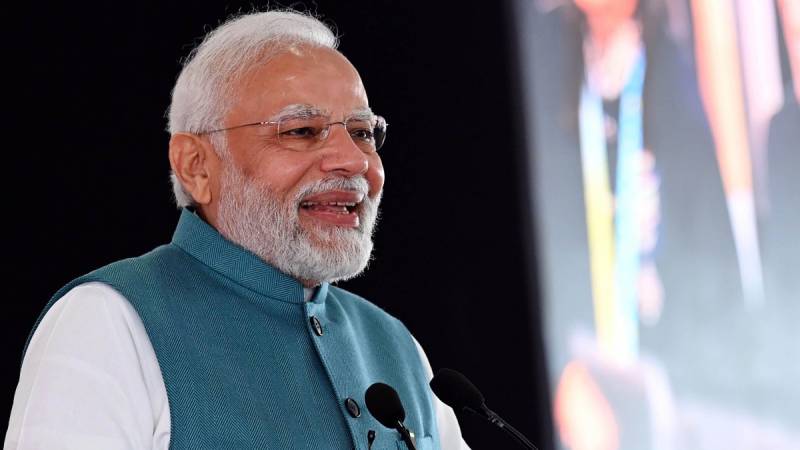This article was first published here by the Friday Times on July 3, 2023.
Understanding the world and where it’s heading requires understanding how seemingly unrelated pieces of information fit together. For example, at first glance a tourism summit, an agreement to build jet engines, and a map in a new parliament building may not seem connected. But these three data points highlight trends that should worry those charged with leading and protecting Pakistan.
India’s G20 tourism summit in Kashmir last month was meant to show the world that the disputed territory was peaceful and prosperous. Despite the heavy presence of Indian soldiers and drastic security measures that strongly suggested otherwise, most of the world seemed to accept India’s Orwellian narrative. Aside from a few of Pakistan’s close allies, the G20’s members were happy to help India whitewash its brutal military occupation of the Himalayan state. One that has claimed the lives of roughly 100,000 Kashmiris who desired nothing more than the right to govern themselves as free people instead of living as second class subjects under a hostile regime.
Next, we have the various military and technological cooperation agreements signed between India and America during Prime Minister Modi’s visit to celebrate the growing strategic partnership between both nations. The deal to build jet engines was one of many designed to drastically improve India’s military capabilities while connecting it to America’s defense industry.
Finally, we have India’s new parliament building which prominently displays a map of an “undivided India” depicting Afghanistan, Bangladesh, Myanmar, Nepal and Pakistan as part of a unified India. When its neighbors voiced their concerns, India’s leaders insisted the map was only meant as an homage to an ancient Indian empire. But India’s Minister of Parliamentary Affairs, Pralhad Joshi, did not partake in such gaslighting. Via twitter, he succinctly explained the map shows India’s resolve to pursue an extremist right-wing agenda predicated on uniting the Subcontinent into a single nation, presumably one governed from New Delhi called “Akhand Bharat.”
In their own way, each of these data points reinforces one unmistakable truth. Pakistan is in trouble. The tourism summit proves the world will turn a blind eye to India’s horrific human rights abuses in Kashmir as well as its increasingly heavy-handed approach to the region. While the military agreements highlight America’s intent to actively help India commit new abuses by turning it into a formidable military power. The map is a frightening indication of how India intends to use its new power. It is a stark reminder of the right-wing lunacy that has fueled the BJP’s rise to power and how these developments might destabilize the entire region.
To understand how, one need only look to the Middle East. Just as its unequivocal support empowered Israel to attack and subjugate the Arabs, America’s support for India could have the same impact on the Subcontinent. Its blind insistence that Israel is a healthy democracy even though it is clearly a violent apartheid state shows it will employ the same gaslighting to shield India if it pursues similar policies.
These are not the only data points that should worry Pakistan. The summit and military agreements are merely a reflection of India’s growing clout on the world stage since it implemented a series of economic reforms in the 90’s. Due to these reforms, India will soon have the world’s third biggest economy. Its increased wealth has translated to more power and significantly larger military budgets.
Similarly, the map of an “undivided India” is not the only example of India’s rightward lurch. The BJP’s attacks on free speech and the marginalization of India’s minorities, particularly its Muslims have already been well documented. Perhaps the biggest indication of India’s growing fanaticism is the fact that the guy pegged to replace Modi, Yogi Adityanath, is a right-wing thug masquerading as a Hindu priest.
Unfortunately, there is so much data pointing to danger for Pakistan that it is difficult to sift through it all or even know which data set to prioritize. Whether from the growing power of its neighbor to the east, its stagnant and inefficient economy, dysfunctional political system, deteriorating internal security situation, exploding population, or climate change, Pakistan faces a myriad of threats that are only getting more challenging by the day. Each is potentially existential in nature.
Thankfully, the solution to all these problems is the same. Pakistan’s government must finally start providing the public services needed to nurture the economic and technological development that can allow it to prosper and protect itself in an increasingly unhinged world. The future belongs to those nations capable of building advanced semiconductors, quantum computers, A.I. powered software, and similar goods. Building a scientific and industrial base that can lead to these abilities will require deep rooted reforms designed to empower and educate its people, improve its finances, and establish the rule of law.
Instead of implementing these desperately needed reforms, its leaders have opted to use China as a crutch. However, creating a neo-colonial dependency on China will only provide the illusion of modernization without any of the substance. As India’s example so poignantly illustrates, Pakistan will never prosper until it creates a democratic political system that can unleash the energy of its people. Until that happens, the threats to its freedom and prosperity will only grow.

Pakistan nurtures terrorism against Iran which is, almost certainly, also a nuclear-armed state.
Her leaders must be suicidal to be making sure to have two nuclear states.
But I agree with you, depending on China or US or Arabs is not the way to go.